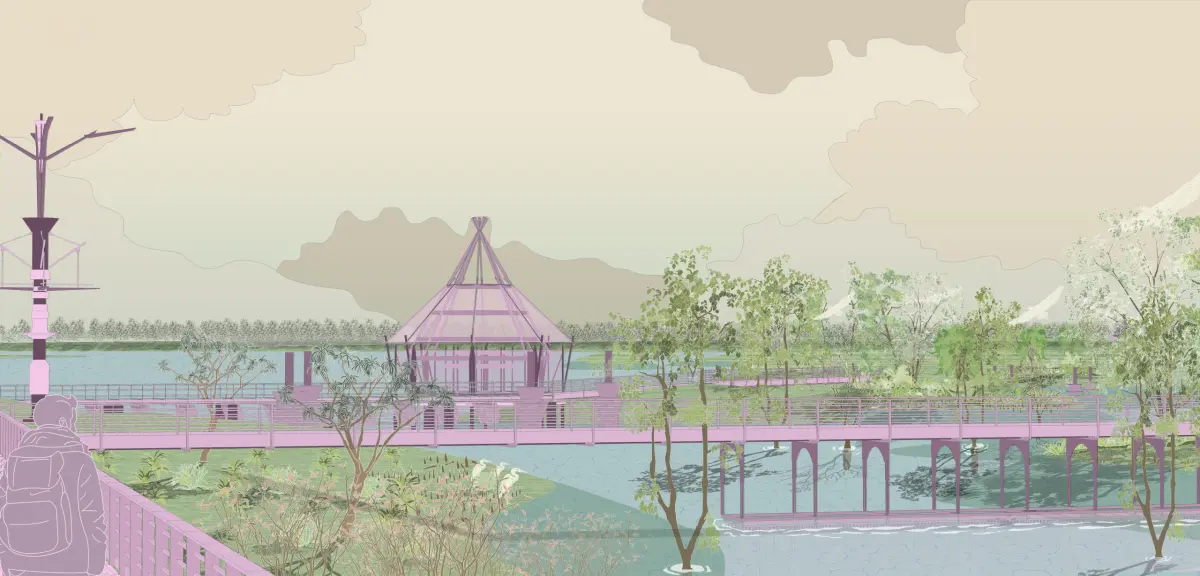
Situating Ghosts and Monsters in Khatib Bongsu
BY Sophia Tan Qi Ying
SUPERVISED BY Asst. Prof. Simone Chung (Dr.)
STUDIO THEME ARCHITECTURE’S BACK LOOP
Abstract
Understanding Nature as no longer a pristine entity, human interference with the environment might perhaps be better framed as a mere redirection of a presupposed ‘natural’ course of ecosystems. Taking cue from Stephanie’s Wakefield Anthropocene Back Loop, our current period of great destabilization offers a potential for ‘experimentation, reorganization and transformation’. With a melding of natural occurrences with increasingly artificial interventions, how do we discern between the two? Have we instead long found ourselves accustomed to a nature of a hybrid ecosystem? Singapore’s long trajectory of commandeering nature for nationalistic goals, offers a case study in increasing human hubris of propping up the liveability of nature through technological interventions. Have we however, stopped to consider the unintended, non-designed impacts of these interventions? While it has only grown ever important to be cognizant of the state of Nature around us, we seem to be suffering a shifting baseline syndrome made ever difficult with a national practice of ‘making clean’ in a bid to create a single, homogenous story.
In anticipating the future of a Nature Park situated in Khatib Bongsu, this thesis seeks to uncover and tap on the disturbances in the landscape and manifest these changing conditions, making them visible. Employing the devices of Ghosts and Monsters as a research methodology; Ghosts uncover the spatial and temporal layers of a ‘thought-to-be’ vacant site, revealing a palimpsest of human disturbance over time. Monsters reveal the morphing and clashing of human and the non-human. Imagined through a series of technologies structures, each intervening and propagating the phenomena found on site. The emergence of this architecture creates a medium to accentuate otherwise overlooked processes and ultimately settling to form part of this ever-evolving, misunderstood landscape.
Supervisor Comments
An unexpected outcome of the COVID-19 lockdown in 2020 was the flourishing of natural life across Singapore’s meticulously maintained landscape that rekindled local appreciation of nature, in particular biodiversity heritage, and (re)mobilisation of the state’s greening agenda. With the 2030 City in Nature development plans underway, what insights can the state incorporate perspicaciously in a way that rightfully acknowledges and comprehends the past? Sophia’s project posits a slow architecture is necessary to realise a truthfully sympoietic approach melding topological formation, ecological conservation and light material footprint. The topicality of this thesis’ research is validated by its inclusion in an international academic workshop on Green Cities in mid-2021.
- Asst. Prof. Simone Chung (Dr.)